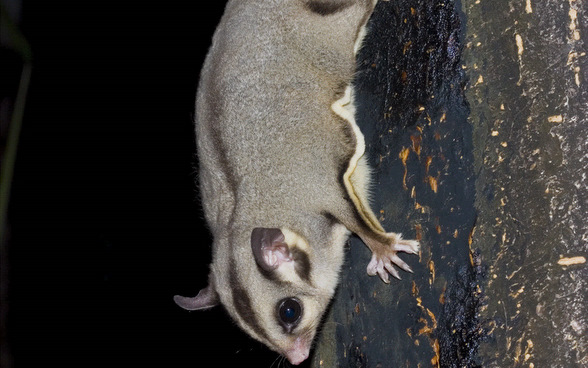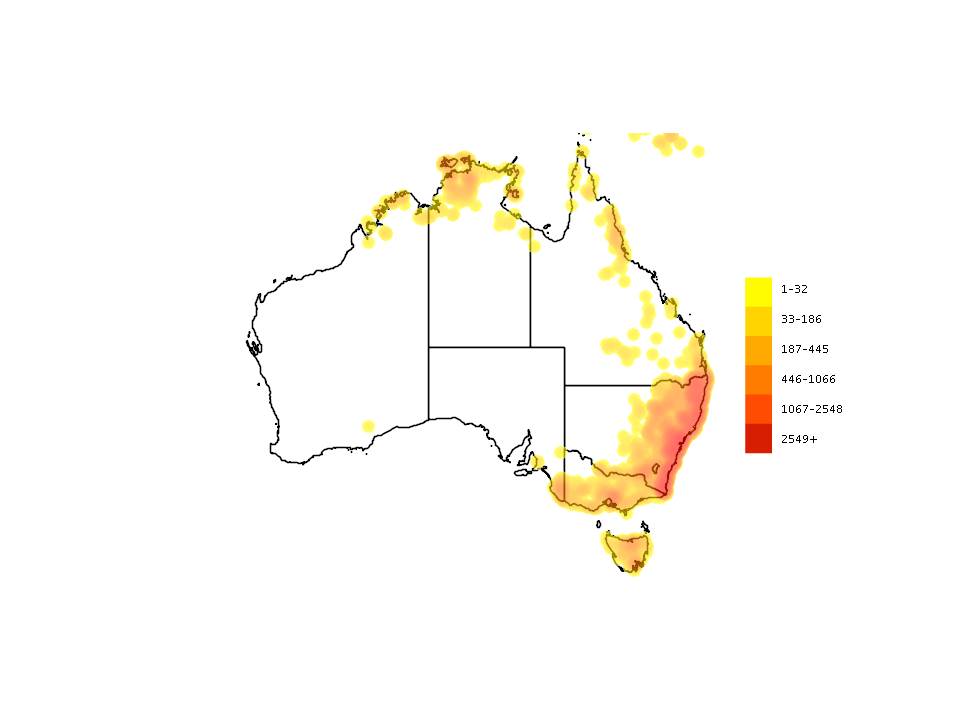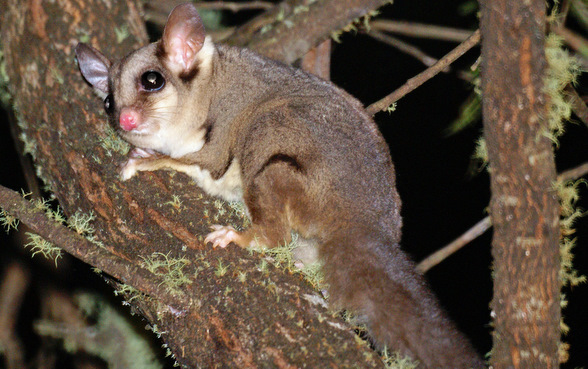Behaviour
Call
Highly vocal with a range of vocalisations for different occasions, including a shrill yapping when a predator is nearby, a sharp shriek when fighting, and a gurgling chatter when disturbed in its nest.
Diet
Floral nectar, acacia gum, eucalypt sap and insects. During spring and summer it eats mostly insects to provide the increased protein it needs to breed.
Movement
It spends its days in leafy nests in tree hollows, which often house up to seven individuals plus their young. It emerges from its nest at night to feed, moving between trees by gliding through the air for up to 50 metres, sometimes even 100 metres! It is able to glide because of a membrane (or flap of loose skin) which extends between its fifth finger and first toe. It leaps from a tree, spreads its limbs to expose the membrane and directs and maintains its glide by varying the curvature of the membrane and using its long bushy tail. Then it lands on all fours. It stays high up in the trees, moving quickly between the small branches, and rarely descends to the ground.
Breeding
Mating occurs in July and August, then two (or very rarely three) babies are born about 16 days later. The young remain in their mother's pouch for about 70 days, and then in the nest for a further 30 to 40 days. When they are about 110 days old, they begin to leave the nest to forage for food, usually with their mother or father. If conditions are favourable, there may be a second breeding season in the year.
Field Guide
Improve your identification skills. Download your Sugar Glider field guide here!





